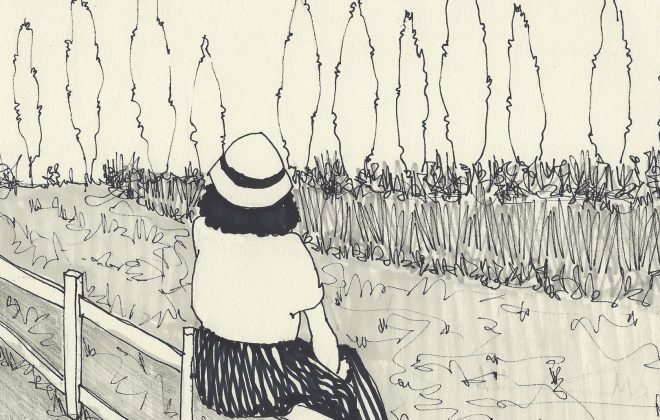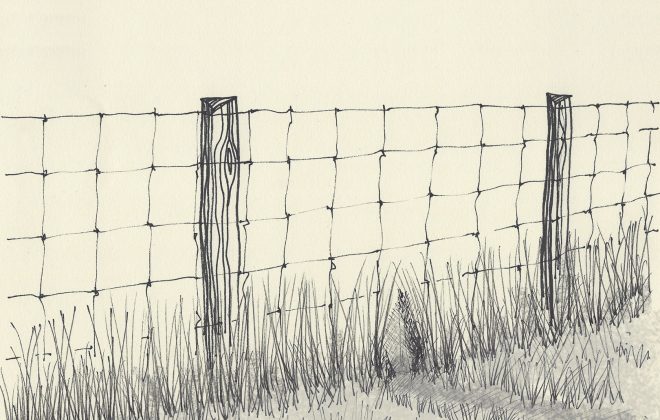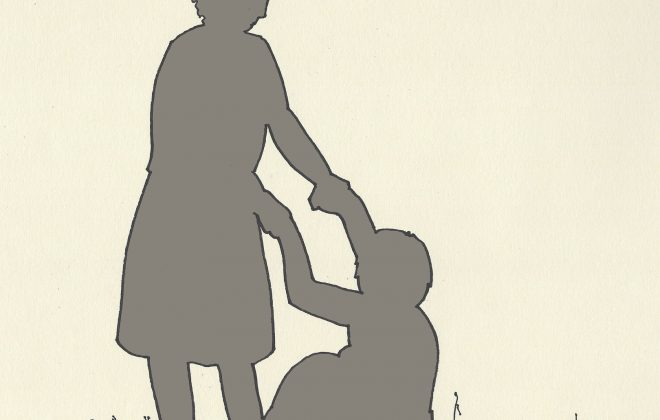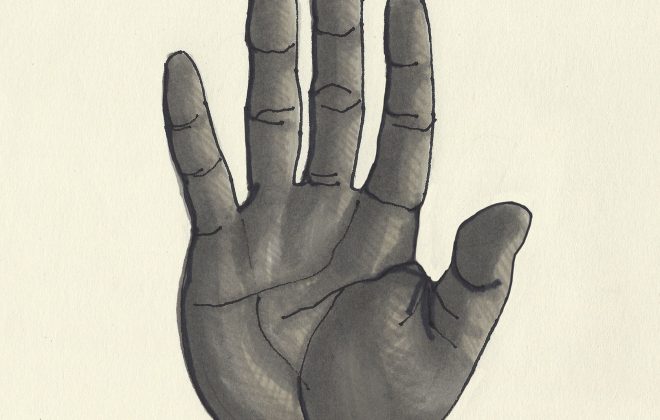The case of the missing finance director
Pathways
When my 90-year-old mother fell and broke her ankle she required the skills of the orthopaedic ward in our local hospital. They organised the surgery and managed the immediate recovery. Her long-term rehabilitation was exported to an NHS funded nursing home. Aids to living were supplied on discharge. Brilliant collaboration and alignment across services and a mother back at home living independently; backed by an equally brilliant GP service in the village. My mother was taken down a clinical pathway that was well-travelled, well signposted and well-governed.
The standardised pathway worked well for my mother. Compare this to another relative; bladder cancer; coupled with angina and mobility problems linked to obesity and polypharmacy. She presents a multi-sided demand to her hospital. She needs the expertise of lots of people if she is to have any quality of life. When she arrives in the Emergency Department (ED) via ambulance, she presents a real challenge to its ability to manage an alignment and collaboration of services that will cohere around her condition, over time, in a way that can be effective. You can imagine the team in the ED considering the following sorts of questions:
- What is going on clinically?
- What is the best bespoke pathway to keep her safe?
- What do we need to do now – are there standardised pathways that are good enough for now?
- What is possible to provide now – are these standardised pathways available now?
- How do we manage any gap between the bespoke pathway needed and the available standardised pathways?
- How do we balance her needs, bed availability and our need to meet the four-hour requirement?
- How do we balance her needs with the hundred other people waiting in the ED?
These are not abstract questions. The people involved will work them through with varying degrees of openness. The idea explored here is if the DoF is engaged and curious about how these questions are worked, the safer it is for people.
The bed state meeting
It is the third-bed state meeting of the day, sometime around 15.00. Most of the people around the table have been at work since 7.30 am and doing email an hour or so before at home. Most have not eaten much and have been in back to back meetings. The mood is one of tension. Laptops are open and phones being discreetly looked at. The Emergency Department (ED) is backed up and there are not many beds. The divisional manager (DM) responsible for ED walks in. He sits at the head of the table and notes the matrons are sitting together. He calls the meeting to order and starts telling people what he needs to happen.
The DM goes through a list of patients who have been waiting in ED. They need to move to wherever there is an empty bed. One of the matrons raises a hand. She says she knows Mrs Adams (aged 64) a regular patient on the haematology ward. She is very unwell and needs to go there and not be an outlier. The room quietens. The DM looks at the matron and says that is not possible. The matron persists, ‘we cannot ignore the risks…’. The DM drops his head and then looks up. ‘Look, just fucking move her. Just do it’. The matron looks away and says nothing more. No one else speaks and the meeting comes to an end with a reminder the next meeting is at 18.00. People understand they will not be leaving work until the crisis is past. The DM leaves. A couple of the matrons stay and ask if their colleague is ok. She is visibly upset.
This is bullying
The dialogue is accurate. I know people who speak like this and who have been spoken to like this and who have sat in silence as these words are spoken. This way of talking is constituent of bullying1See: Sanderson, C. (2020) The bystander effect. The psychology of courage and inaction. William Collins, London..
The matron is an experienced and compassionate professional. She was silenced for months. Her colleagues were similarly silenced. Her capacity to think; collaborate and work hard was significantly diminished. This loss of value constitutes a part of the cost of bullying noted above. Such a loss of resource, if it were more tangible (e.g. ‘who is stealing the photocopier paper, drugs, etc’), would trigger an investigation. However, when it comes to the loss of expensive skills and know-how, there is a lot less curiosity.
People who shout and swear, are complicit in wasting money. Given this cost, why are people who are known to behave like this protected? What is it they are doing that warrants protection? What is needed is an investigator and this is a role for the DoF.
Mobilising people who know how to silence others
The senior people I know do not condone these behaviours and can find themselves hearing this language and not intervening. I share the reluctance to intervene. The origin of my reluctance (and theirs I think) is the difficulty of separating myself from these behaviours. I can behave badly and sit in silence. While I need to take responsibility for my actions and inactions, just thinking about my ‘character’ is insufficient.
Unprofessional behaviours should not only be bracketed as a manifestation of the bad behaviour of a bad person. This approach silences the conversation people face, when my relative with complex needs, shows up in the ED. That is, how the collaboration and alignment she needs, across teams and divisions is to be achieved, within lines of hierarchical accountability for how resources are consumed and managed.
Back to the bed state meeting
The language and tone of the DM lets the matron know she should be quiet. Her anxiety is not welcome, as if this anxiety is nothing more than evidence of her lack of comprehension or professionalism. Thus, it is a personal moment for everyone, as mechanisms from the neurological to the group dynamic, play out (see Sanderson, 20202Sanderson, C. (2020) The bystander effect. The psychology of courage and inaction. William Collins, London.). And, it is an organisational ‘moment’. The tension between the hierarchical accountability for the ED target and the risks facing Mrs Adams is resolved. This is achieved by the instrumental bullying intervention of the DM; the compliance of everyone present; a leadership who know that this is how the MD gets things done; and regulators who install a state of survival anxiety3Survival anxiety arises when we realise, we must learn something if we are to survive. It is a motivator to change and not all change can be argued as good. In this case, external regulators behave as if their only interest is in not failing against the standards they have helped set. What the DM knows he must learn is to ignore the complexity of the task of care in a busy DGH. He has learnt to be firm; directive; clear or he has had to learn to be confrontational; and aggressive.
See: Dartington, T. (2010) Managing vulnerability. The underlying dynamic of systems of care. Karnac Books, London.
Schein, E. (2013) Humble inquiry. Berrett-Koehler, San Francisco..There is no mind to the harm done to people.
The costs of this ‘moment’ are layered:
- The matron loses cognitive capacity and here willingness to collaborate. Her well-being suffers and her know-how is lost to her colleagues, patients and employer.
- The bystanders experience the same.
- The staff on the admitting ward will not fully understand what Mrs Adams needs, associated with her disease and social context. This makes it hard for them to provide the sort of bespoke pathway they would like and keep her safe.
- Mrs Adams and her family are less able to take up an advocacy role, as they are not engaged in a conversation about a bespoke pathway.
- The risks associated with the approach are lost to the informal spaces of the service.
- The senior leadership are ill-informed about the risks of their approach to manage the tension between compliance and organising people and resources around a patient.
Who cares?
You might say so what? Mrs Adams arrives on an orthopaedic ward. The staff share their values with their haematology colleagues. They know about respect and keeping people safe. All that Mrs Adams is looking at is a delay in entering her bespoke pathway. But imagine a scenario where Mrs Adams has a sudden deterioration in her condition. Who carries the burden of the knowledge of what this means to her, her family, and her clinicians? The matron in the bed state meeting was speaking from her understanding of the gap between what the DM imagined would happen to Mrs A; what he told people to do about Mrs A and what Mrs A, her family and her clinicians might experience. This may seem trivial given the size of the hospital. But the aggregation of delays and their consequences is a significant risk, not adequately managed by telling people to shut the **** up.
The DM is being played
Reluctantly my sympathies are also with the DM. They may have a sense of themselves being tough and no-nonsense, but they are being played. They are, regardless of gender:
‘The managerial stud, the business athlete who is expected to perform with the minimum of foreplay and only the token acknowledgement of the need for a meaningful relationship.’ (Dartington, 2010, p.374See: Dartington, T. (2010) Managing vulnerability. The underlying dynamic of systems of care. Karnac Books, London.).
Who they believe themselves to be, aligns with what the senior thinks5To use the word ‘think’ is to risk ascribing conscious intent. The senior people I know, care deeply about their work and the welfare of others. The thought is not thought about; it is an assumption about what is the right thing to do. Unthought, because it is taken as a given and therefore not requiring scrutiny. it needs to silence. In the current regulatory environment, the public conversation about individual patients and bespoke pathways can be unwelcome noise. This is a risky strategy as the complexity of patients increases.
Returning briefly to the bed state meeting. The MD works for the division accountable for the ED. He feels the pressure of the enforcement system every day. He has normalised being shouted by regulators when he fails to deliver compliance. He needs things to be predictable. The matron is appealing for something different. A bespoke pathway. The language and tone of the meeting makes it impossible to pause and think together. To acknowledge that what is happening and felt so personally is the re-emergence of the tension between bespoke and standard pathways; in a context of pressure on the ED and a regulator who acts as if this tension does not exist. Or, if it does exist, is best explained by poor management.
It may be that the original decision to move Mrs A to orthopaedics is the only one for now. Talking it through means the collateral damage to relationships and thinking would be a lot less.
The task of senior leadership
There is always a gap between work as prescribed, imagined, experienced and disclosed. How this gap is managed mediates the safety of a complex system like health and social care. There is a choice to be made on how this gap is to be understood and managed. You can use the shut the **** up method or you can do something more intelligent. Choosing how to manage the gap is the work of the senior leadership. A leadership that wants to weaken the drivers of poor behaviour needs to ‘take up the gap’. To understand the gap as a source of data about how the fundamental tension between compliance/standardisation and bespoke pathways is being ‘held’, by whom and how.
A final visit to the bed state meeting
The DoF arrives at the bed state meeting. She is here because she knows the ED is under pressure again and the DM may feel justified in suspending the normal rules of conduct, in favour of ‘robust action’ to defend the organisation.
She knows the DM feels this responsibility for compliance personally, and that he has been under pressure for months. She knows he is been left to hold this organisation-wide responsibility by the executive team. She wants to support him, and protect the organisations teaming capability. She knows that the DM is shouted at by the external regulator. She knows this can translate into scapegoating internally. She knows she has a duty of care to him.
When Mrs A is being discussed she notices that the conversation is oscillating between clinical need and compliance demands. She hears the change in tone and notices the silence of others. She hears the matron arguing for a bespoke pathway, to do the right thing by Mrs A and the DM arguing to keep it simple. She intervenes.
The DM has been carrying this responsibility for months and I know your all exhausted. My job is to support this group in managing the tension, crudely described, as do the right thing and regulatory compliance. We have to try and hold both sides of this dilemma and not be over-identified with any one side. It doesn’t help our work together if we end up replicating the sort of behaviour our regulators demonstrate. That is not going to stop.
I sense that Mrs A needs something bespoke to keep her safer and we need to get her out of ED fast. How do we do that? What do people advise? What do you need?
This is an imaginary intervention. It can be dismissed as soft. However, it is offered to model the ethic that someone has to intervene. Intervene to protect the thinking and capacity for cohesion that keeps people safer. That this is the responsibility of the executive and one suited to the DoF. Responsibility should not be exported to the people in the thick of managing the day to day tensions. The DoF is in a position to step in and ask people to pause and think. To represent the rule of law and good practice. To publicly acknowledge that bullying has it’s origins in the tension between compliance and doing the right thing; compounded by the differential cost and difficulty of regulating a bespoke pathway.
Conclusion
The calm intervention of a DoF can remind people that bullying and incivility undermines the alignment and collaboration required to make cohesion around a patient a reality. They can remind people that the tension between bespoke and standard pathways is not to be consigned to individuals and is a structural issue the management of which is, in the end, the responsibility of the executive. They can remind people that bullying negatively affects know-how, the most expensive resource of the organisation. As such needs the protection of the DoF.
Notes
[1] See: Sanderson, C. (2020) The bystander effect. The psychology of courage and inaction. William Collins, London.
[2] Ibid.
[3] Survival anxiety arises when we realise, we must learn something if we are to survive. It is a motivator to change and not all change can be argued as good. In this case, external regulators behave as if their only interest is in not failing against the standards they have helped set. What the DM knows he must learn is to ignore the complexity of the task of care in a busy DGH. He has learnt to be firm; directive; clear or he has had to learn to be confrontational; and aggressive. See:
Dartington, T. (2010) Managing vulnerability. The underlying dynamic of systems of care. Karnac Books, London.
Schein, E. (2013) Humble inquiry. Berrett-Koehler, San Francisco.
[4] Dartington, T. (2010) Managing vulnerability. The underlying dynamic of systems of care. Karnac Books, London.
[5] To use the word ‘think’ is to risk ascribing conscious intent. The senior people I know, care deeply about their work and the welfare of others. The thought is not thought about; it is an assumption about what is the right thing to do. Unthought, because it is taken as a given and therefore not requiring scrutiny.
Download this story here. But please acknowledge the source.




